Grow your business with Pinterest Advertising
Increase your revenue and scale your business with AdvertiseMint, the trusted Pinterest advertising agency!
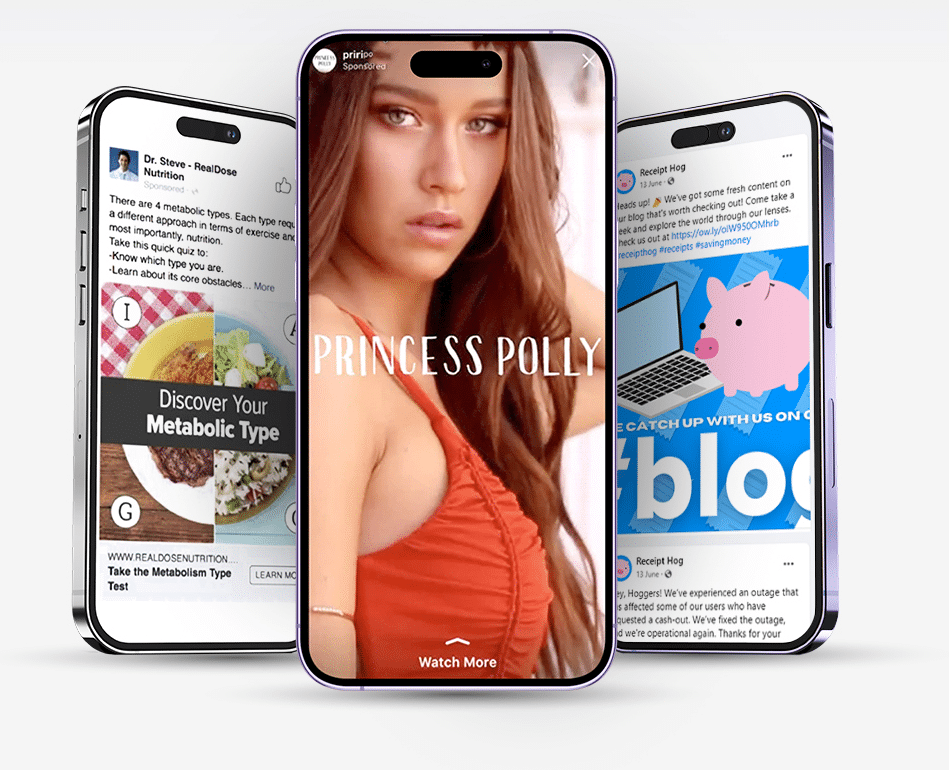
Grow your business with Facebook, Instagram & TikTok advertising. Let's talk 844-236-4686.


When it comes to running Pinterest ads, our Pinterest marketing experts know how to make your business profitable. Increase your revenue and scale your business with AdvertiseMint, the trusted Pinterest advertising agency!
Updated: January 12, 2026
Can you guarantee my Pinterest ads will be profitable?
The answer is simple
The only guarantee is that Pinterest will show your ads and take your money.
The rest is all a game. Constantly moving. Constantly adapting.
New Algorithms. New Competitors. New Challenges.
Its like a casino, and the house was built to win.
So how can your business grow?
Come closer! We’ll tell you how!
You need a guide. An expert. A team of experts.
Experts who navigate the Pinterest ads jungle all day, every day.
Experts that constantly produce results.
They combine knowledge and data with creativity.
They know what works. They know how to scale.
They will outwork anyone to get results.
And guess what…

Pinterest advertising is a powerful marketing strategy that enables businesses to reach a vast and engaged audience on the visual discovery platform. Advertisers can deliver compelling and visually appealing content that aligns with users ‘ interests through various ad formats, such as Promoted Pins, Promoted Videos, and Promoted Carousels.
By utilizing Pinterest’s sophisticated targeting options, including interest targeting, keyword optimization, lookalike audiences, businesses can ensure their ads reach the right people at the right time. Moreover, Pinterest advertising offers valuable analytics and tracking tools, enabling advertisers to measure the performance of their campaigns and optimize for maximum impact.
With the ability to create compelling ads that tell a story and showcase brand value, Pinterest advertising presents an excellent opportunity for businesses to boost brand awareness, drive traffic to their websites, and increase sales while engaging with a diverse and receptive community of users.
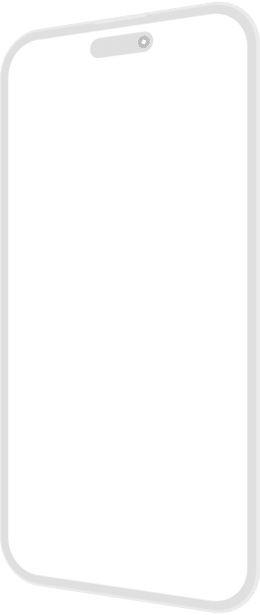
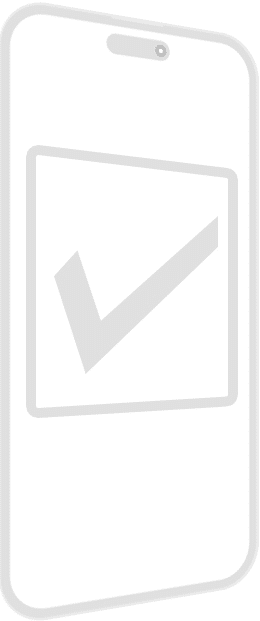
Pinterest advertising can be a great way to reach a highly engaged audience of potential customers. Pinterest users are already interested in visual content, so Pinterest ads are a natural fit.
If your target audience aligns with Pinterest’s user demographics, such as a predominantly female and millennial audience, it presents an opportunity to engage with a diverse and receptive community.
Pinterest’s advanced targeting options, combined with the ability to leverage rich pins and compelling visuals, can boost brand awareness, drive website traffic, and lead to increased sales.
Conducting thorough research and considering the unique strengths and limitations of Pinterest ads will help determine whether it’s the right fit for your business.
The cost of Pinterest advertising can vary based on several factors, including the type of ad format chosen, the targeting options selected, the competition in your industry, and the bid amount you set.
Pinterest offers a variety of ad formats, such as Promoted Pins, Promoted Videos, and Promoted Carousels, each with its own pricing structure. Advertisers can choose between a cost-per-click (CPC) model, where they pay for each click on their ad, or a cost-per-thousand-impressions (CPM) model, where they pay for every thousand impressions of their ad.
The bid amount determines how much you are willing to pay for your desired action and also influences the overall cost. In order to maximize the effectiveness and efficiency of Pinterest advertising, businesses should carefully plan their budget, optimize ad content for better engagement, and regularly monitor campaign performance to ensure they are getting the best value for their investment.
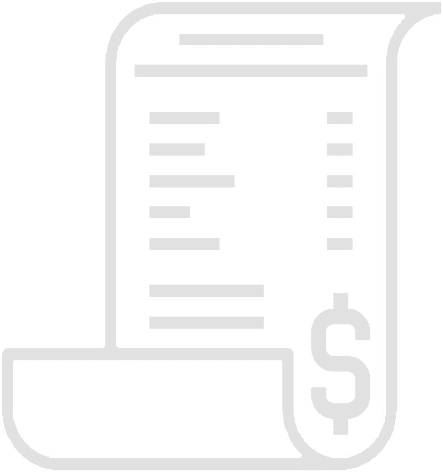
Pinterest has 463 million monthly active users.
For fiscal year 2022, Pinterest revenues were $2.8 billion.
Pinterest is the 15th most popular social media platform.
76.2% of Pinterest users are female.
Agencies on average ran ads for 68 months for specific products.
The relative ROI from pinterest ads for 8 out of 12 sources remained stable.
Find new customers and deepen relationships with people who will click through and buy.
Generate excitement and maintain momentum around a new product or service.
With guaranteed reach and frequency, you’ll ensure your potential customers are seeing your brand messaging on a consistent basis.
Find your ideal prospects and present them with compelling offers or info about your business in exchange for their contact information.
Make sure your videos or commercials are seen by your target audience.
You can target audiences within a wide range of consumer attributes like demographics, interests, behaviors and custom audiences.
Get your app into the hands of the right people and keep them engaged with your app.
Reach customers on their mobile phone who are located near your location to increase foot traffic and sales from your business.
Reach an extremely targeted audience of business decision makers or individuals in specific roles or companies.
Promote your business by going LIVE to your community and feature your business products or services.
Communicate directly with your customers through messages and comments on the platform. Perfect for sales, lead generation or customer service.
Promote your business posts to ensure your content is reaching your community and followers so they can engage.
I am grateful to have AdvertiseMint as our Facebook advertising agency. They are very knowledgeable about Facebook, and they’re always fast to implement our requests. We have worked with them on sponsored posts, direct response, and dynamic product ads. They have always fought to get us a positive ROI.
– Jim, NEWEGG
Rather than solely focusing on promotional content, showcase the human side of your brand through behind-the-scenes photos, employee stories, and customer testimonials. Share content that reflects your brand’s values, mission, and culture, making it relatable and authentic. Engage with your audience by responding to comments and messages in a friendly manner.
Much like other social networks, Pinterest is filled with a vast array of images and videos. To effectively promote your brand and market your products or services, it’s crucial to share visuals that truly stand out amidst the abundance of content on the platform.
Expand your Pinterest reach by sharing your content on other social networks. Cross-promoting your pins on platforms like Facebook, Twitter, and Instagram can attract new audiences and drive traffic to your Pinterest profile. Utilize eye-catching visuals and compelling descriptions to entice users from different platforms to explore your Pinterest content and engage with your brand.
Advanced Knowledge – From day one, you are accessing the collective knowledge of the agency experts and all the campaigns they have run in the past. This means avoiding costly mistakes someone less experienced may repeat.
Dedicated Support – As an agency, we have direct access with the Pinterest team to solve critical performance issues quickly, optimize existing ad performance, and access new features and tools to help you increase results ahead of your competition.
Reduced Cost – Utilizing the agency model allows your business access to multiple experts at a fraction of the cost for full-time individuals to complete the same work.
Seasonal and Trending Content: They can leverage seasonal trends and popular topics to keep your ads timely and relevant.
Compliance: Ad agencies are well-versed in platform policies and guidelines, ensuring your ads meet all requirements and get approved promptly.
Scaling Campaigns: Agencies can scale your campaigns efficiently to reach a broader audience and achieve your marketing goals.
Improve your Pinterest with comprehensive growth strategies and expert management. Our team provides a custom combination of Pinterest services specifically tailored for your needs.
Services
Our mission is to create the world’s most profitable ads. The AdvertiseMint accomplishes this with experts who specialize in Pinterest advertising ensuring your ads will be shown to the right audience, at the right time for the right price. Our job is to ensure this happens consistently and that the performance of your Pinterest ads are meeting your expectations. Our team uses a combination of elite individuals in media buying and creative, along with the latest technology in artificial intelligence and machine learning to ensure your ads are generating the results that matter for your business.
Hi there. Thanks for visiting AdvertiseMint.
Are you ready to grow your business with Pinterest ads? The team at AdvertiseMint helps successful companies like yours grow through Pinterest advertising.
There are three main reasons why companies hire agencies.
The first is because there is simply too much work on their plate and they need help growing their business. Agencies provide an expert team at a fraction of the cost of hiring full time employees. Our creative team and elite media buyers are standing by, ready to help you increase sales, generate high-quality leads, increase app installs and grow your brand.
The second is because they want to work with a team that is highly specialized in a specific type of advertising. Most business owners and executives want to work with people who are smarter than them, thus ensuring the best results for their business.
The third is performance. When business owners and marketing executives realize there is a disconnect between ad spend and results generated with their current team, it becomes a problem that needs to be addressed and resolved immediately. The opportunity cost of not making a change to an expert team can be devastating to the bottom line.
The world of advertising is changing faster than ever now, with new advertising platforms and opportunities becoming available all the time.
AdvertiseMint uses the ETP Method to provide superior results for our clients vs our competitors.
The ETP Method combines the three things that are essential with all advertising.
ELITE: We have created a team that brings their elite skills to their industry. We’re talking elite media buyers, elite copywriters, elite video creators, editors and elite talent. Elite means an individual is dedicated to the process of becoming the best, which means they are knowledgeable but always learning, certified and have a track record of winning. Advertising is a team sport and we want you to have an All-Star team.
TECHNOLOGY: We embrace the new technology that is constantly improving advertising. This means selecting the best ad platforms, utilizing advanced features and latest tools in artificial intelligence and machine learning to create better ads, faster and more efficient than ever before.
PERFORMANCE: Results are all the matter in Advertising and the end result of elite individuals using the latest in technology. The end result of everything we do. If the right people are using the right tools and analyzing the right data, the performance will speak for itself.
If you are committed towards growing your business and looking for an Advertising Partner, we’d love to talk with you.
AdvertiseMint helped simplify my life by overseeing all paid ads on Google, Facebook, TikTok and Amazon. Their team is very knowledgeable regarding each ad platform and was able to help me scale up my business. I could never have done it without you.
– Maricia, LITTIL
Pinterest is a popular social media platform that allows users to discover and save ideas for various interests, projects, and hobbies in the form of images or “pins.” It is essentially a visual discovery platform where users can create virtual pinboards to collect and organize content that inspires them. Using Pinterest for marketing can be highly beneficial for several reasons:
Pinterest offers a unique and visually appealing way to connect with your audience, drive website traffic, and promote your products or services effectively, making it a valuable platform for marketing your business.
Setting up Pinterest Ads is a straightforward process that involves the following steps:
Follow Pinterest’s advertising guidelines and best practices to ensure compliance and maximize the effectiveness of your ads.
To access Pinterest Ads and manage your advertising campaigns, you will need to log in to your Pinterest Business Account. Follow these steps to log in:
Once you are logged in, you can navigate to the Ads Manager to create, manage, and monitor your Pinterest ad campaigns.
The cost of Pinterest Advertising can vary based on several factors, and it operates on a bid-based system. Pinterest uses a “cost-per-click” (CPC) model, where you pay for each click your ad receives. The following factors can influence the actual cost per click:
Pinterest provides a bidding guide and other resources to help advertisers understand and optimize their bids and budgets.
Pinterest Ads offer four main objectives to help you reach your business goals:
You can choose one objective for each campaign, or you can choose multiple objectives for a single campaign.
Here are the creative specs for Pinterest Advertising:
There are five main types of ads on Pinterest:
It’s essential to check the official Pinterest Advertising website or the Ads Manager for the most up-to-date information on available ad formats and features.
Pinterest has strict ad policies in place to maintain a positive user experience and ensure that the promoted content aligns with its community guidelines. Advertisers must comply with these policies to have their ads approved and displayed on the platform. Some of the key ad policies for Pinterest Advertising include:
These policies are subject to change, and Pinterest may update or add new policies as needed. Here is Pinterest’s official website, which gives detailed guidelines on ads.
Yes, Pinterest Advertising has a tracking pixel called the “Pinterest Tag.” The Pinterest Tag is a snippet of code that you place on your website to track actions and conversions from Pinterest ads. The Pinterest Pixel can track the following:
For more details, you can visit the Pinterest website.
There are a few ways to view successful ads on Pinterest:
Additionally, you can stay informed about successful ad strategies and best practices by reading case studies and success stories shared by Pinterest for Business. These case studies often highlight successful ad campaigns and provide insights into the strategies that led to their success.
Pinterest advertising, like any other marketing channel, comes with its own set of advantages and disadvantages. Understanding these pros and cons can help you make informed decisions about incorporating Pinterest into your advertising strategy. Here are some of the pros and cons of Pinterest advertising:
Pros
Cons
It is essential to weigh the pros and cons and assess how well it aligns with your specific marketing goals and target audience.
The value of Pinterest advertising lies in its unique features and capabilities that can benefit businesses in various ways. Here are some of the key values and benefits of advertising on Pinterest:
If you’re looking for a way to reach a highly engaged audience, target your ads to specific audiences, and drive traffic to your website or app, then Pinterest advertising is a great option.
Pinterest Ads has a number of best practices that can help you create effective ads. Here are a few of the most important:
By following these best practices, you can create effective Pinterest ads that will help you reach your target audience and achieve your marketing goals.
Both Pinterest and Snapchat are popular social media platforms that can be used for advertising. However, some key differences between the two platforms may make one better suited for your business than the other.
Snapchat
Ultimately, the effectiveness of Pinterest or Snapchat advertising will depend on your specific marketing objectives and how well each platform aligns with your target audience and advertising strategy.
The Pinterest algorithm for advertising is designed to show the most relevant and engaging ads to users based on their interests and behaviors. Here’s how the Pinterest algorithm works for advertising:
Pinterest uses machine learning and AI to analyze user behavior and preferences, making adjustments to the algorithm over time.
Pinterest is a visual platform that is perfect for businesses that want to reach a visually-oriented audience. Here’s a step-by-step guide to help you develop a successful Pinterest marketing strategy:
Pinterest offers several targeting options to help you reach your desired audience effectively. Here’s how to target the right audience on Pinterest:
By combining these targeting options and regularly monitoring the performance of your ads, you can effectively reach and engage the right audience on Pinterest, maximizing the impact of your marketing efforts.
To help you craft ads that resonate with your audience and drive results, here are some essential tips:
By following these tips, you can create effective Pinterest ads to help you reach your target audience and achieve your marketing goals.
There are a number of ways to measure the success of your ads on Pinterest. Here are a few of the most important:
You can track these metrics in Pinterest Analytics. Pinterest Analytics is a free tool that allows you to track the performance of your Pins, ads, and campaigns.
Optimizing your ads on Pinterest is essential to maximize your return on investment (ROI) and ensure that your advertising efforts yield the best results. Here are some strategies to optimize your Pinterest ads for maximum ROI:
By implementing these optimization strategies and continually refining your approach, you can maximize the ROI of your Pinterest ads and achieve your marketing goals more effectively.
AdvertiseMint is a full service advertising agency that specializes in performance. This means all aspects of our team are focused around growing your business and increasing your sales, leads or app installs. AdvertiseMint was founded in 2014 and has been featured on Inc., Forbes, Entrepreneur and Newsweek. Our team has worked for fortune 500 companies such as CocaCola and Newegg along with helping start-ups generate their first customer. If you are looking for help with your advertising. We would love to talk.
The AdvertiseMint HQ is located in Hollywood, California, however after covid, we enabled our advertising and creative experts to work remotely from all over the United States. This allows for an improved work/life balance with our team and thus, improved performance. While our team members may not always be in the same office, we utilize the latest tools for virtual meetings, digital collaborations and AI to ensure we’re completing our work efficiently so performance continues to increase.
We’re passionate about performance and want to grow your business. To accomplish this, we focus on three main elements. The first is hiring Elite individuals, these are media buyers and creative individuals that are striving everyday to be the best in their fields. The second is Technology, we utilize the latest in AI or machine learning tools to help get better results faster. The third is performance, if we have the right talent using the right tools, performance will increase and your company will thrive.
AdvertiseMint has been a leading advertising agency for the past 10 years. With over $500M in ad spend managed, our team has helped hundreds of companies increase sales and grow their business. We realize your business is unique and requires a custom approach towards your audience, advertising and analytics.
AdvertiseMint charges an agency rate based on a percentage of ad spend. Our pricing is transparent and is the same for all our clients. You can view AdvertiseMint pricing online. The agency rate ranges from 25% to 5% of the total monthly ad spend that AdvertiseMint managers for you. Our minimum budget requirement is $10,000 per month spent on advertising. There is no limit on the number of ad platforms you can run ads on. This amount covers certified media buyers, video editors and graphic designers to help ensure your results are increasing. Any customized projects or deliverables are billed at $150/hour.
When you sign up with AdvertiseMint, the first seven days is for onboarding. This is where the team will review your business information, competitors, branding, creative guidelines and perform an account audit for each advertising platform. The team will set up an initial onboarding call and then select a time to meet each week to review results and discuss what’s next. Each month, you’ll receive a custom report detailing progress.
We believe AdvertiseMint is the best Facebook ad agency to help grow your business. The AdvertiseMint team is dedicated to being elite at both media buying and creatives. We strive to be leaders in our industry, staying on top of the latest tools, features and systems that can help improve results. One of the biggest differences between AdvertiseMint and other ad agencies is we value every dollar that is spent on ads. We understand that each dollar matters when it comes to advertising and that everything must be measured by performance and if something isn’t working.
When you are reviewing agencies, you should consider the following elements – Leadership of the agency, expertise in the desired ad platforms or media placements, team size and location, along with cost structure.
AdvertiseMint guarantees that we’ll continue to work until your results are met. However, while AdvertiseMint would love to offer guarantees on advertising, it simply is not possible. There are many moving components with ad platforms that involve algorithms, technology and elements that we simply do not control or have access to.
When you sign up with AdvertiseMint, the team will set up weekly or bi-weekly calls with you to review performance and discuss the next steps with your campaigns. The team will also send over monthly reports discussing trends, analytics and elements causing performance to increase or decrease, along with our suggestions for moving forward.
AdvertiseMint uses a technology stack that includes the ad platforms and third party tools like Google’s Looker Studio. Our goal is to build any reports needed to ensure we can understand the changes in the campaign performance and how to continually optimize it.
The world of advertising moves very fast. The way we stay on top of things is by having a team of elite individuals that are dedicated towards being the best at what they do. This means they are consistently learning and monitoring their industry to stay a step ahead of the competitors. This consistent desire to learn keeps them on the forefront and then new features or strategies are discussed in our daily team meetings.
The top strategies we use is to follow the performance and focus on the elements that will make the biggest impact. This breaks down to two areas. Media buying and ad creatives. It’s essential that ads are shown to the correct audience and with the correct campaign structure. Ad creatives are also becoming more essential than ever. It’s important to have a consistent stream of unique content going to your consumers.
Here are our top picks for best Facebook ad agencies.
AdvertiseMint requires a 3 month commitment to begin. This gives us the time needed to get up to speed with existing ad account structure and begin building out a strategy that improves results. After the 3 months are up, the contract is renewed on a month-to-month basis. We believe this approach allows you the flexibility to always do what’s best for your business. Our job is to make you money and if we’re successful, we believe we’ll work together for a long time.
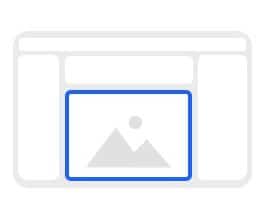
Choose the audience for your ad based on demographics like age, gender, education and more. Reach people in cities, countries and communities where you want to do business.

Reach people based on their interests, hobbies and the Pages they like on Facebook. This also includes being able to target fans of your direct competitors.

Find people based on their purchase behaviors, device usage and other activities.

Reach people who are connected to your Page, event or app, as well as their friends.

Connect with the people you already know, and more people like them, on Facebook.

The advantages of running paid ads on Pinterest are the audience, the ad units, and the performance. Ads have the ability to reach
Disclaimer: AdvertiseMint is not owned or a subsidiary of Meta. AdvertiseMint is an agency that provides Pinterest advertising services to help businesses run profitable and successful ads on Meta. While AdvertiseMint is listed in the Meta partner directory and works directly with the Meta support and agency teams, Meta does not endorse or promote AdvertiseMint as their official Facebook advertising agency. All business names, trademarks and intellectual property regarding Meta on this page are owned exclusively by Meta.